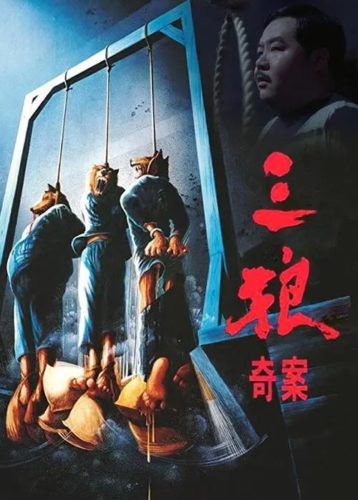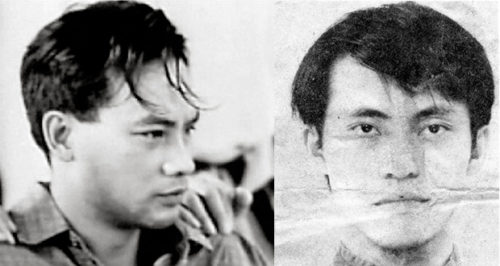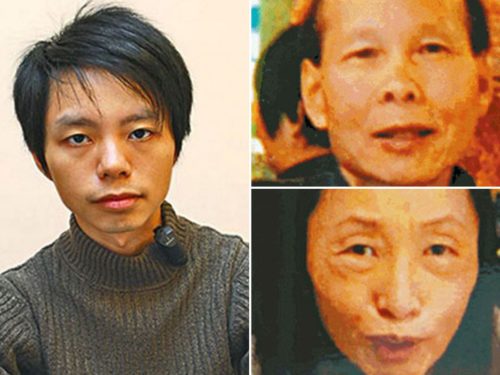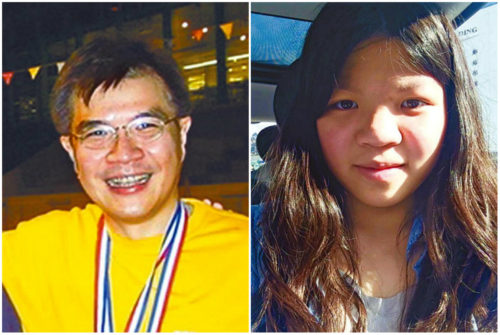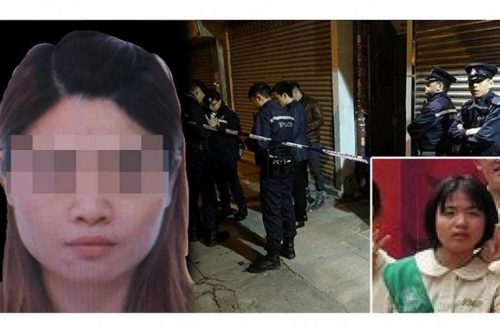Grisly Hong Kong: Stories of shocking violence
Hong Kong is among the safest cities in the world, but cases of violent crime, while rare, do exist — and when they happen, they often seize the public’s attention.
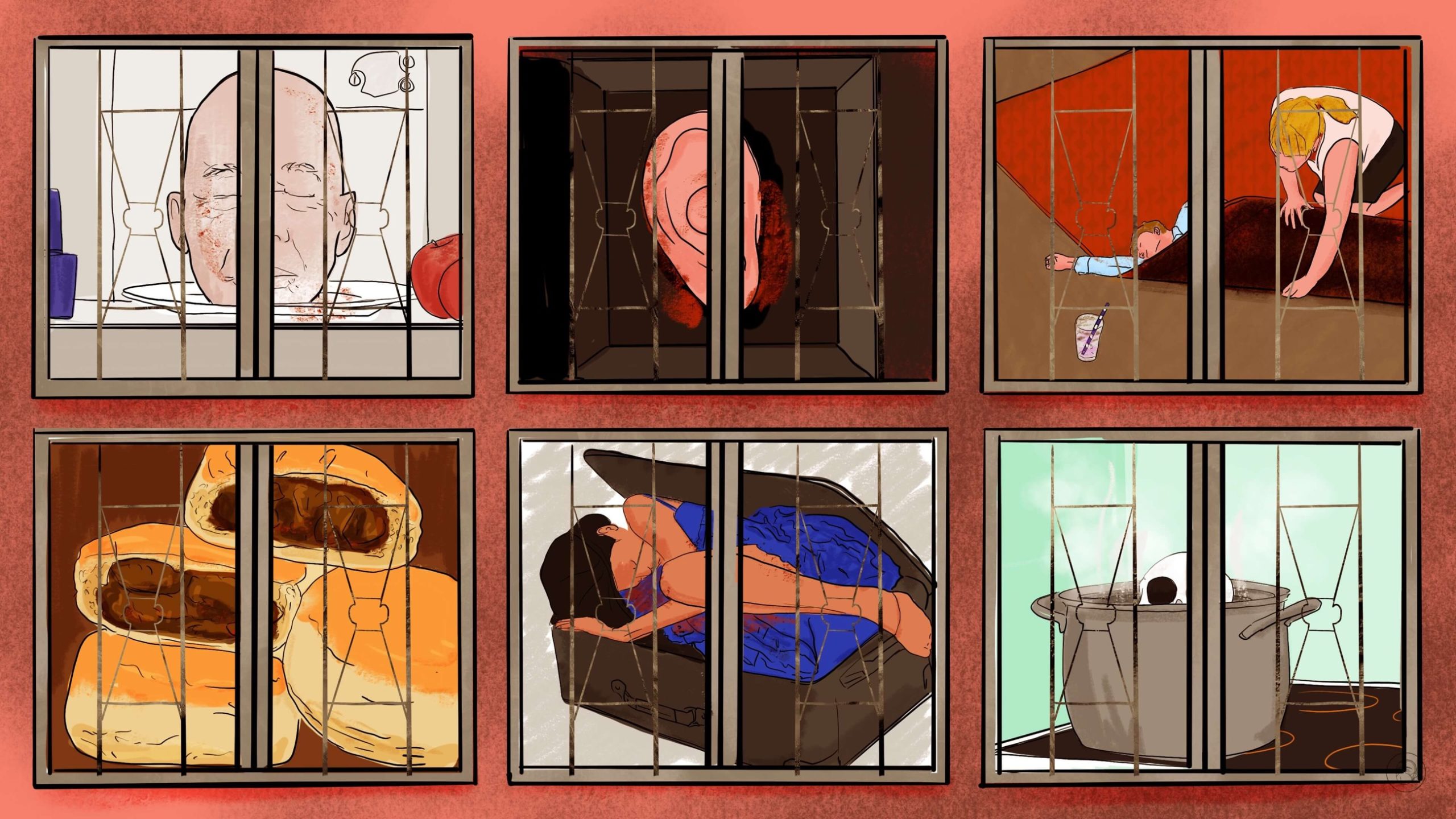
It’s something Jack the Ripper might have done.
Abby Choi, a social media influencer, was found dismembered by police on February 24, in a house rented by her former father-in-law. The graphic nature of the crime gripped the city: how her legs were found in a fridge, her skull in a cooking pot, a bloodstained chainsaw and meat grinder left at the scene. The ex-husband, his brother, and father have all been taken into police custody on suspicion of murdering her in revenge for financial disputes involving tens of millions of Hong Kong dollars.
The case has taken the city by storm, stories circulating on even the smallest news or gossip about the incident. Beyond the grisly details, it’s a shock for a city with a famously low homicide rate (only reporting 30 cases in 2022).
But although such gruesome crimes are unusual in the city, they aren’t unheard of. Below, we have a list of 10 high-profile murder cases. Thankfully, all culprits are now either serving life sentences or are dead themselves. Un-thankfully, many of the cases were turned into poorly-made blockbusters aiming to titillate and entertain. As with the Penny Dreadfuls hawked on the streets of Victorian London, cheap thrill is as much a reason for public interest as sympathy.
This rogues’ gallery of butchers spans the entire spectrum of the city’s social makeup, from the most callous of Hong Kong’s underworld to the most sharp-suited from its financial district. There are drug-fueled deliriums and meticulously planned killings. There is no overall pattern behind these murders, other than perhaps a grim penchant for dismemberment.

The three wolves (1959-1961)
On June 18, 1959, Wong Ying-kau (黄应求 Huáng Yìngqiú), the son of wealthy oil merchant Wong Sik-pun (黄锡彬 Huáng Xībīn), mysteriously disappeared. Three days later, Xibin received a package containing his son’s belongings, a blackmail note demanding 500,000 Hong Kong dollars (signed “wild wolf”), and Yingqiu’s right ear. Xibin refused to pay the ransom, and police failed to catch the blackmailers.
A year and a half later, Xibin’s car was ambushed by three armed men, who blindfolded him and imprisoned him in a wooden box, telling him they had killed his son and would kill him too if he still refused to pay. This time Huang complied.
The case went cold, until a tip-off from a disgruntled sidekick led the police to the three men, who were eventually executed. The series of kidnappings fascinated Hong Kong at the time and afterwards, and was turned into a film in the 1990s, Sentenced to Hang.
The pork bun murders (a.k.a., Eight Immortals Restaurant murders) (1985)

The brutal murder of restaurant proprietor Zhèng Lín 鄭林 and nine of his family shocked Hong Kong, but actually took place just across the bay in Macau. Lin was a gambling addict who owed a lot of money to Huáng Zhìhéng 黃志恆 — who had already killed a man in Hong Kong for not paying his gambling debts.
After briefly holding Lin’s son hostage — holding a broken bottle to his neck — in the family’s restaurant, Huang killed all nine people on the premises: the oldest being a 70-year-old grandmother, the youngest a 7-year-old boy. Huang then dismembered the bodies and threw the remains into the sea.
Body parts washing up on the beach prompted a police investigation, which eventually tracked Huang down. During that time, he had been operating the Lin’s shop to feign as if all was well, and that the family had gone on a trip. Rumors started spreading that Huang had been feeding customers with their remains, hidden in pork buns. This too got turned into a film in 1993, The Untold Story, which made sure to play up the pork bun myth.
The rainy night butcher (1982)
Hong Kong’s first serial killer was Lam Kor-wan (林過雲 Lín Guòyún), a sadistic, sexually-repressed young taxi driver who trawled the streets of the city by night. Over several months he picked up, strangled, and dismembered four women, keeping their sexual organs in Tupperware jars and dumping their bodies on the streets. The weather being bad when they got into his taxi was the only thing linking the four victims.
Lam was caught in August 1982, after a Kodak store tipped off police when he tried to get photos of his horrific acts developed. He felt no remorse for his actions, telling police some of his victims had been “useless to society.” Lam appeared as a character in Dr. Lamb (1992), a flick filled to the brim with lingeried misogyny.
The “Hello Kitty” murder (1999)
When hostess Fan Man-yee (樊敏儀 Fán Mǐnyí) ran afoul of three triad members, she was kidnapped, tortured, raped, and beaten for a month. She was then dismembered — her body parts binned but her head retained, hidden in a stuffed Hello Kitty toy shaped like a mermaid.
In 2001, two separate movies, There Is a Secret in My Soup and Human Pork Chop, re-enacted the case for cinema audiences, with about as much sensitivity and good taste as their names suggest.
The milkshake murder (2003)
U.S. expats Nancy and Robert Kissel had looked to all the world like a happy, successful couple. Robert was a banker headhunted by Goldman Sachs, Nancy a volunteer at the Hong Kong International School, where their three children studied. But then Robert’s dead body was found stuffed into a rolled-up carpet in their underground storeroom.
Robert Kissel had long suspected his wife of having an affair with a TV repairman while the two had been separated during the SARS outbreak that year, and was considering filing for divorce. With half an eye on insurance payments, Nancy drugged her husband with a spiked strawberry milkshake. She then beat him to death with a statuette, then rolled his blooded corpse up in a carpet.
And then? The Two Mr. Kissels — which is also based on the unrelated murder of Robert’s brother, Andrew — on cable.
Kiki Wong Ka-mui (2008)
Kiki Wong Ka-mui (王嘉梅 Wáng Jiāméi) was a 16-year-old “compensated dating” worker who was strangled to death by 28-year-old Ting Kai-tai (丁启泰 Dīng Qǐtài) during a meet-up. Ting later claimed Wong said she “wanted to die very much.” After strangling Wong, he cut her up, flushed the remains down a toilet, and tossed her head into the sea.
A co-worker of Ting’s told the South China Morning Post that Ting, who had a day job as a delivery worker, preferred to be left alone at work and was easily irritated. He was turned in to the police by a friend, whom he had rung that night saying he had strangled a young girl. But he later told the court he had been on ecstasy and ketamine at the time, a regular habit, so was unable to remember how Wong had died.
The case inspired the 2015 film Port of Call, with the lead actress, Jessie Li (李俊杰 Lǐ Jùnjié), winning a Hong Kong Film Award for Best Actress.
Henry Chau (2013)
29-year-old Henry Chau (周凱亮 Zhōu Kǎiliàng) didn’t like his parents. He would later tell the court that his father played the TV too loud, and that his mother once humiliated him in front of a girl. But he also kept a list of his parent’s bank accounts, suggesting he may have wanted their savings. At the end of the day, no one could be quite sure why he killed his parents in a rented flat, cut up their bodies, put their heads in a fridge, and microwaved their flesh to try and pass it off as barbecued pork.
He confessed as soon as his parents were reported missing, but had not taken any money from their bank accounts. “People may wonder why you did this,” Justice Michael Stuart-Moore told Henry Chau as his sentence was passed. “The fact there is no obvious answer is what makes you so dangerous.”
The Sparring Partner came out last year.
Rurik Jutting (2014)
Rurik Jutting: Privately-educated at the elite Winchester College in Britain, a Cambridge graduate, Bank of America employee — and murderer.
Jutting killed two Indonesian women — Sumarti Ningsih, 25, and Seneng Mujiasih, 26 — and then turned himself in. He confessed to killing Mujiasih but withheld information about Ningsih, whose body was later found by police stuffed into a suitcase on Jutting’s balcony.
Jutting claimed to have been under the influence of alcohol and cocaine, but the numerous photos on his phone — of him posing with the partially decapitated Ningsih, for instance — suggested he was a cold-blooded masochist. Psychiatrists diagnosed him with narcissistic personality disorder. Stuart-Moore, the justice again presiding, urged the jury not to believe Jutting, who he said “has not shown a shred of remorse.”
Jutting is serving a life sentence.
The yoga ball murders (2015)
Khaw Kim Sun, a Malaysian professor at Hong Kong’s Chinese University, had become estranged from his family, after having an affair with one of his students. His wife refused to grant him his wish of a divorce. So Professor Khaw hatched a plan: taking a canister of carbon monoxide from the faculty home with him, he filled a leaky yoga ball with the gas, and left it in the trunk of his wife’s sunshine-yellow Mini Cooper. A jogger found the woman, along with Khaw’s 16-year-old daughter, seemingly asleep in the car, parked on the side of the road.
Prosecutors told the court that “the last thing” Khaw had wanted was for his daughter to die — allegedly he had told his youngest child to stay at home that day. Either way, the professor’s cunning plan was sussed out, and he is currently serving a life sentence.
12-year-old girl dismembered (2017)
Hé Měijié 何美洁 was last seen alive on December 16, 2017, after watching Star Wars with a friend. The next day her remains were found strewn around a waterlogged flat owned by her mother, her face “ripped off,” her head found in a cooker.
The mother, Cáo Yàn 曹燕, pled guilty to murdering her daughter and trying to flush her body parts down the toilet.
Officers had been called to the apartment on an unrelated incident, a more trivial matter involving a mobile phone, reported by a neighbor. Police suspected Cao of being delirious, acting under the influence of drugs. She told interrogators that she had heard voices in her head during the incident. When asked if she knew who the dead body was, she replied, “My head said to me it was not my daughter. A voice in my heart told me it was not my daughter.”
A court declared that Cao suffered from schizophrenia and psychosis, and she was sent to a psychiatric hospital.
